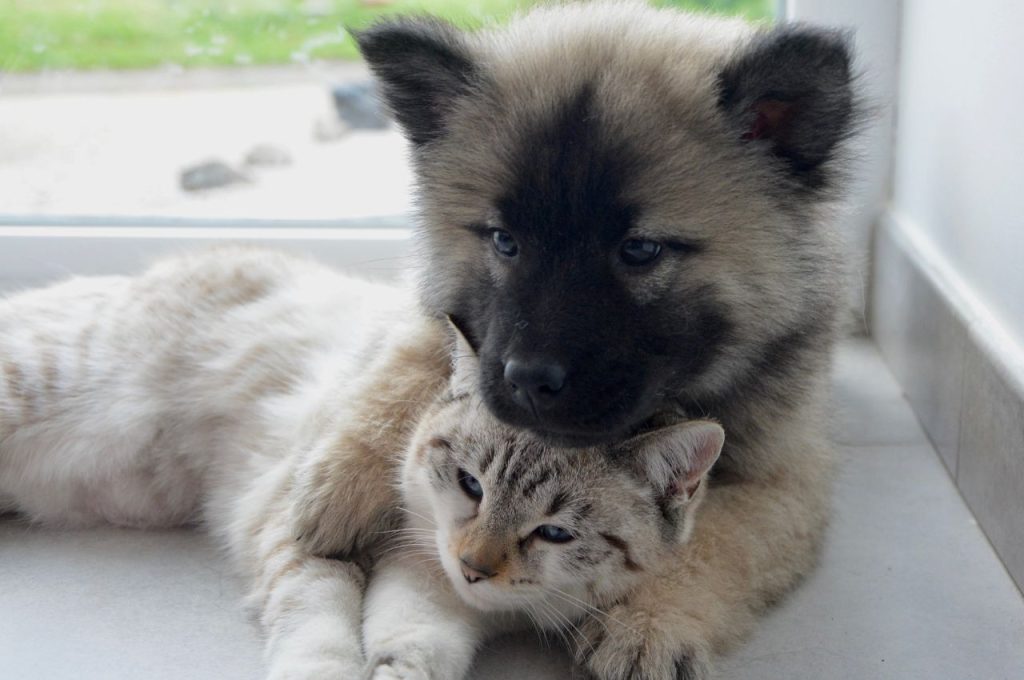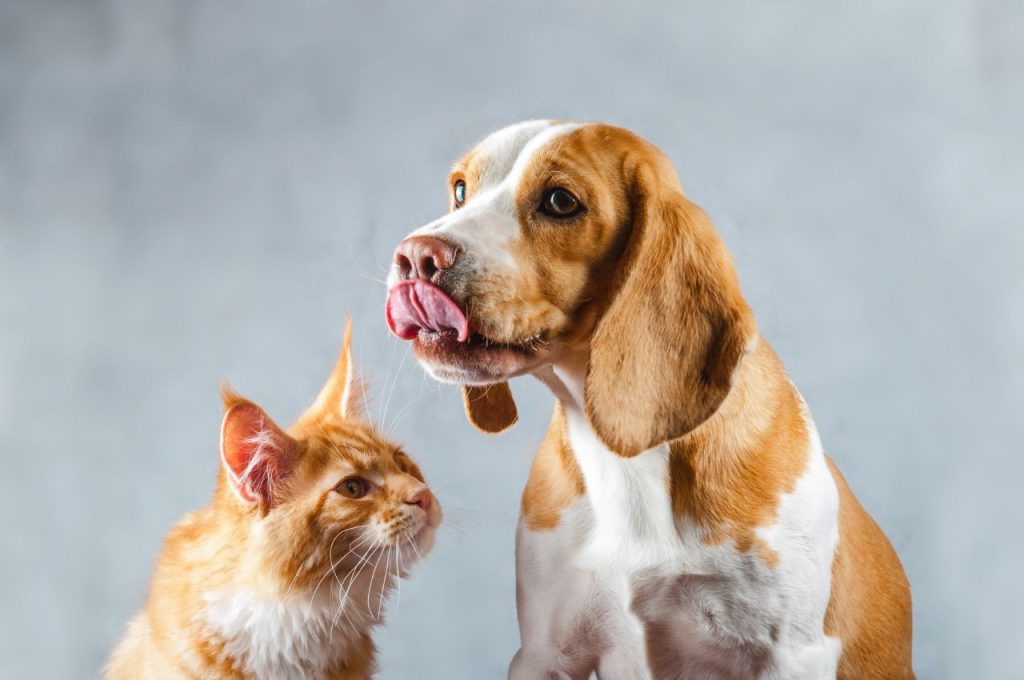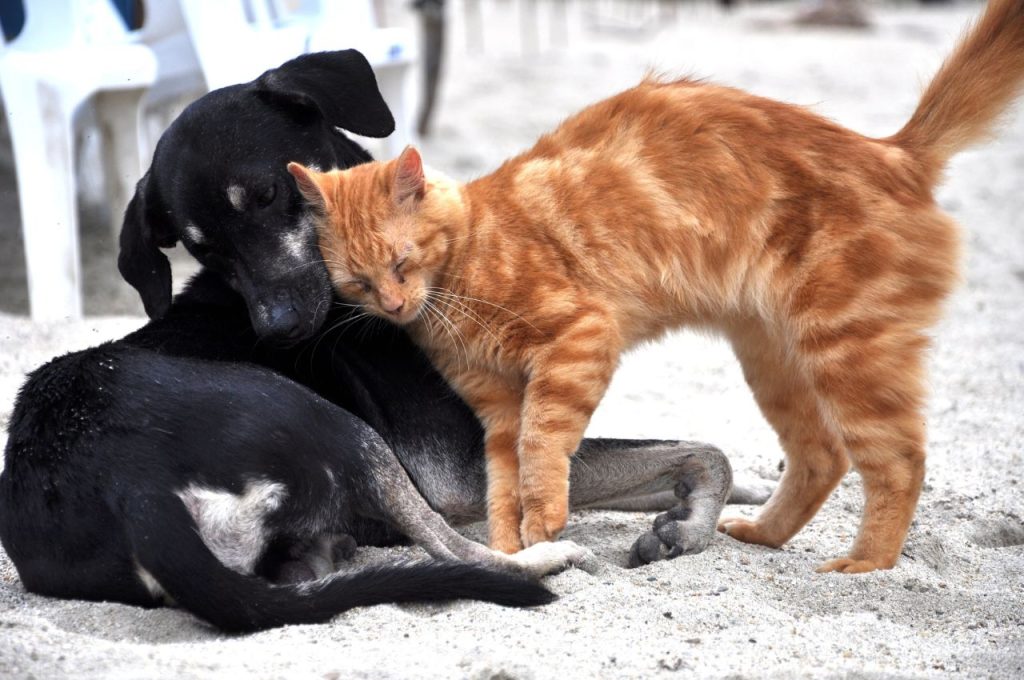To stop a dog from chasing a cat, use positive reinforcement to redirect its focus onto something else. Are you tired of your dog constantly chasing your cat around the house?
This behavior can be frustrating and can create a tense environment for both your furry friends. Fortunately, there are effective ways to put an end to this chasing habit. By implementing positive reinforcement techniques, you can redirect your dog’s attention to more appropriate activities, discouraging it from pursuing the cat.
We will explore some simple yet effective strategies that can help you stop your dog from chasing your cat. By following these steps, you can create a more peaceful and harmonious environment for all members of your household. Get ready to foster a happy coexistence between your dog and cat.
Understanding The Behavior
Dogs chasing cats is a common behavior that can be worrying and stressful for both the pets and their owners. However, it’s important to understand that chasing is an instinct for dogs. In the wild, dogs are predators, and their chase instinct is deeply rooted in their genetic makeup. By understanding why dogs chase cats, you can begin to address the behavior and find solutions to prevent it from happening. In this article, we will discuss how to recognize the instinct behind chasing and identify triggers that may be causing the behavior.

Recognizing The Instinct
To find a solution to the chasing behavior, it’s crucial to recognize the instinct behind it. Dogs have a strong prey drive towards smaller animals. This instinctual behavior is accentuated by movement and running, which triggers the dog’s chase response. When a dog sees a cat darting across the yard or a swift movement by a small animal, it can trigger their hunting instinct, making them want to give chase. By understanding this instinctual behavior, we can take proactive steps to redirect their focus and control their chase response.
Identifying Triggers
Identifying triggers that set off the chasing behavior in your dog is an important step in resolving the issue. Each dog may have specific triggers that spark their instinct to chase cats. It could be the sight, sound, or even the scent of a cat. Pay close attention to your dog’s behavior and try to identify what stimulates their chase response. Keep in mind that it could be a combination of factors, such as the movement of the cat and the high-pitched sounds it makes. Once you have identified the triggers, you can work towards sensing your dog to them.
Training Techniques
Training your dog to stop chasing your cat can be a challenging task, but with the right techniques, it is possible to create a peaceful environment for both your furry friends. In this section, we will explore two effective training techniques: positive reinforcement desensitization and counter-conditioning.

Positive Reinforcement
Positive reinforcement is a powerful technique that involves rewarding your dog for exhibiting desired behaviors. By providing rewards such as treats, praise, or playtime, you can effectively train your dog to associate not chasing the cat with enjoyable experiences. Here’s how you can implement positive reinforcement:
- Whenever your dog shows calm and relaxed behavior around the cat, immediately reward them with a treat or praise. This positive association will help them understand that being calm earns them something they love.
- Consistency is key. Make sure to reward your dog every time they display the desired behavior, gradually reducing the frequency of rewards as they become more accustomed to not chasing the cat.
- Incorporate clicker training: Using a clicker, a small handheld device that emits a distinct sound, can further enhance positive reinforcement. By clicking the device the moment your dog exhibits good behavior, you can create a clear signal that a reward is coming.
Desensitization and Counter Conditioning
Desensitization and counter-conditioning are training techniques that involve gradually exposing your dog to the presence of the cat and changing their emotional response from arousal or aggression to calmness or indifference. Here’s how you can implement these techniques:
- Start by keeping your dog on a leash and maintaining a safe distance from the cat. Allow them to observe the cat while providing treats and praise for calm and relaxed behavior.
- Gradually decrease the distance between your dog and the cat as long as they remain calm. If your dog starts to show signs of excitement or aggression, increase the distance again until they calm down.
- Repeat this process, gradually decreasing the distance each time, until your dog can be near the cat without any negative reactions.
- Pair the presence of the cat with positive experiences for your dog. For example, you can feed your dog their favorite meal on the opposite side of the room where the cat is present. This will help create positive associations with the cat’s presence.
Training your dog to stop chasing the cat requires patience, consistency, and positive reinforcement. Remember to always reward good behavior and gradually expose your dog to the cat using desensitization and counter-conditioning techniques. With time, practice, and a lot of love, you can foster a peaceful coexistence between your dog and cat.
Management and Prevention
Help prevent your dog from chasing your cat with effective management techniques. Learn how to create a peaceful coexistence between your pets through consistent training and positive reinforcement. Protect the well-being of both animals by implementing strategies to curb this behavior.
Management and Prevention Leash Training One of the most effective ways to manage and prevent your dog from chasing the cat is through leash training. By teaching your furry friend to walk calmly on a leash, you will have better control over their behaviors and reactions. Here are a few tips for successful leash training: 1. Start early: Introduce your dog to the leash and collar at a young age, so they become familiar with the sensation and learn to associate it with positive experiences. 2. Positive reinforcement: Use treats or praises to reward your dog for walking politely on the leash. This will motivate them to continue displaying good behavior. 3. Consistency is key: Be consistent with your training sessions and follow the same routines every day. Dogs are creatures of habit, and a consistent training schedule will help them understand what is expected of them. 4. Take it slow: Begin by walking your dog in a calm, controlled environment with minimal distractions. Gradually increase the level of difficulty as they become more proficient. Creating Safe Spaces Creating safe spaces for both your dog and cat is essential in preventing chasing behavior. By providing separate areas where they can retreat, you can avoid confrontations and reduce stress for both pets.

Consider the following suggestions for creating safe spaces:
Dog-free zone: Designate a specific room or area in your home where the cat can escape from the dog’s presence. Ensure the area is equipped with a litter box, food, water, toys, and a comfy bed.
Vertical spaces: Cats feel more secure when they have access to elevated areas. Install cat trees, shelves, or window perches to give your feline friend vertical spaces where they can observe their surroundings from a safe distance. 3. Baby gates: Install baby gates or pet barriers to separate certain areas of your home. This will allow your cat to roam freely while keeping your dog confined to a specific part of the house.
Supervised interactions: Always closely supervise interactions between your dog and cat. This way, you can intervene and redirect their attention before any chasing behavior occurs.
Remember, it’s crucial to be patient throughout the management and prevention process. With consistent training, a safe environment, and plenty of positive reinforcement, you can help your dog and cat live harmoniously under one roof.
Frequently Asked Questions Of How To Stop Dog From Chasing Cat
How do I get my dog to stop chasing the cat?
To stop your dog from chasing the cat, try these steps: 1. Provide separate spaces for the cat and dog to minimize their interaction. 2. Train your dog to obey commands like “Stop” or “Leave it” to redirect their attention. 3. Use positive reinforcement when your dog behaves calmly around the cat. 4. Keep the cat’s food, litter box, and sleeping areas inaccessible to the dog. 5. Consult a professional dog trainer if the problem persists.
How do I train my dog to leave the cat alone?
Train your dog to leave the cat alone by using positive reinforcement techniques. Reward your dog for ignoring the cat and redirect their attention to a toy or treat when they show interest. Consistency and patience are key in teaching your dog to respect the cat’s space.
How can I stop my dog from attacking my cat?
To stop your dog from attacking your cat: 1. Separate them by creating designated spaces. 2. Train your dog with obedience commands and positive reinforcement. 3. Gradually introduce them in controlled environments using leashes or barriers. 4. Monitor their interactions closely and intervene when necessary. 5. Seek professional help from a trainer or behaviorist if the issue persists.
Conclusion
Ultimately, it is crucial to understand that stopping a dog from chasing a cat is a process that requires patience, consistency, and proper training. By implementing the techniques discussed in this blog post, such as gradually introducing the cat to the dog, using positive reinforcement, and providing sufficient mental and physical stimulation, you can successfully curb your dog’s chasing behavior.
Remember, a harmonious coexistence between your dog and cat is possible with time and effort.
